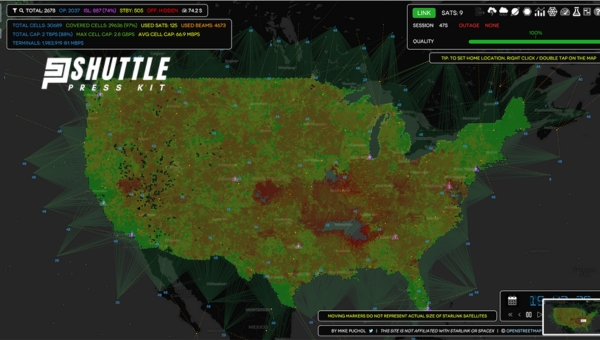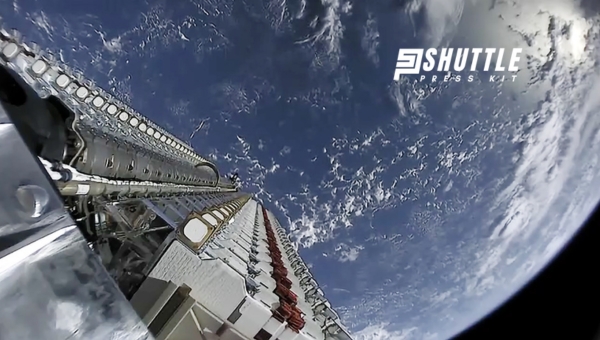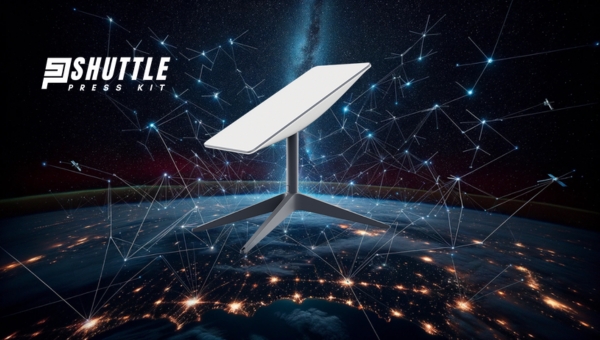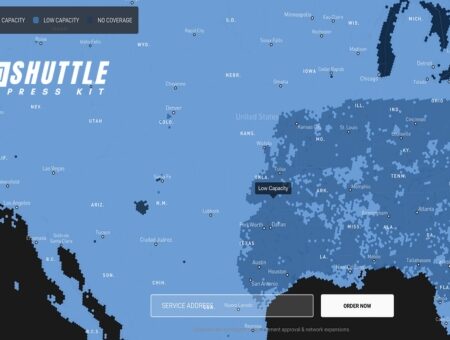When diving into the exciting realm of internet options, it’s easy to get lost in technical jargon. However, understanding the concept of low capacity vs high capacity with Starlink could unlock a seamless browsing experience for you.
In this piece, I’ll guide you through this maze with simple explanations and helpful tips. Whether you’re a gamer requiring high-speed internet or just looking to catch up on your favorite shows without buffering, this article has got you covered.
At its core, low-capacity areas are those where Starlink can only support a limited number of users at slower speeds due to current satellite capabilities. On the other hand, high-capacity areas benefit from more satellites and upgraded technology allowing for more users and faster speeds. This difference significantly impacts your internet experience regarding speed, quality, and reliability.
What Does “Capacity” Mean for Starlink?
When we talk about capacity in terms of Starlink, what we’re really discussing is how much internet bandwidth is available for people using the service. Imagine capacity like a big highway. On a highway, there’s only so much room for cars to travel without causing traffic jams.

Similarly, with Starlink’s internet service, there’s only so much data that can move at one time. If too many people are trying to use the service in one area, it could slow down, just like too many cars on a road can slow down traffic.
There are two main types of capacity to understand: low capacity and high capacity. Low capacity is like a small road that can’t handle many cars at once without getting crowded. If you’re in an area with low capacity for Starlink, it means that the available bandwidth might not be enough to support everyone’s internet needs smoothly all the time.
High capacity, on the other hand, is like a wide freeway with plenty of lanes for traffic. In high-capacity areas for Starlink services, there’s more than enough bandwidth to go around, so you can expect faster speeds and more reliable internet.
Knowing whether you’re in a low or high-capacity area can make a big difference in your online experience — affecting everything from how quickly web pages load to how smoothly videos stream on your devices.
It’s essential for users who rely heavily on the internet for work or leisure to understand this difference because it directly impacts their daily internet usage and overall satisfaction with the service.
Also Read: Starlink vs Viasat: Which Satellite Is Right for You?
Why Low Capacity vs High Capacity Matters?
For Starlink users, whether residing in densely populated areas or remote locations, recognizing why this matters is key to managing expectations and maximizing service benefits.

- Internet Speed: The most direct impact of network capacity on users is internet speed. In a high-capacity scenario, data flows more freely, leading to faster download and upload speeds. Conversely, in low-capacity conditions—often due to over-subscription or physical limitations—users may experience slower speeds during peak times.
- Latency Issues: Latency refers to the delay before a transfer of data begins following an instruction for its transfer. High capacity ensures lower latency because the network can handle requests more efficiently, critical for real-time applications like online gaming and video conferencing.
- Quality of Service (QoS): High-capacity networks are better equipped to maintain quality standards even under strain from multiple high-demand users. Low capacity could mean compromised QoS during periods of heavy usage with potential buffering issues while streaming content or interrupted connectivity.
- Cost Implications: Typically, accessing higher capacity comes at a premium price tag but guarantees consistent performance and reliability essential for business clients or power users in remote locations un-served by traditional ISPs.
Understanding these factors helps Starlink subscribers make informed decisions suited to their specific needs—whether prioritizing cost-saving with lower capacities acceptable for general use or investing in higher capacities essential for professional demands and optimal online experiences.
Dive Deep into Low Capacity vs High Capacity with Starlink
Diving deep into the world of Starlink, it’s essential to understand how their innovative satellite system impacts internet capacity and what that means for us. With the groundbreaking goal of providing global internet coverage, Starlink’s approach to “capacity” plays a crucial role.

The difference between low capacity and high capacity can greatly affect your online experience, from how fast pages load to how smooth streaming videos are. Let’s unravel these concepts further and see why they matter.
How Speeds Differ Between Low and High-Capacity Areas
In terms of service quality, the distinction between low-capacity areas and high-capacity areas has major implications for users. In high-capacity regions, more data can flow through Starlink’s satellite network at once, allowing faster download speeds and smoother streaming services. Imagine clicking on a video and having it play instantly without frustrating buffering times.
On the other hand, in low-capacity areas where fewer resources are available to transfer data over the satellite network, users may experience slower internet speeds. This means web pages might take longer to load or videos may pause often as they buffer. These differences highlight why being in a high-capacity area can significantly enhance your online experience.
The Impact of Location on Your Internet Speed and Quality
Location plays a pivotal role in determining your Starlink internet experience. Here’s how:
- Proximity to Starlink Ground Stations: The closer you are to one of these stations, the stronger and faster your connection is likely to be.
- Population Density: High-density areas might get prioritized for higher capacity due to greater demand, potentially leaving rural areas with lower capacity.
- Geographical Features: Mountains, tall buildings, and other obstructions can affect signal strength and quality.
Understanding these factors is important because they directly impact the speed and reliability of your internet. This highlights the necessity for strategic planning by Starlink in deploying their ground stations to balance coverage across diverse landscapes.
Availability Issues Surrounding Low and High-Capacity Areas
Availability remains a significant challenge when considering Starlink’s services across different capacities. High-capacity areas often correspond with more populated regions or places where infrastructure can support dense satellite networks. These are areas where businesses thrive on quick data transfer, so having high-capacity coverage makes sense.
However, this leaves low-capacity regions—often rural or remote locations—facing limited availability. Although Starlink’s goal is global coverage, ensuring every spot on Earth enjoys high-speed internet comes with logistical hurdles. This dichotomy results in a digital divide that needs addressing as the network expands.
Exploring the Reach of Starlink’s Services Across Various Regions
Expanding on availability issues, it’s fascinating to observe how far-reaching Starlink’s ambition truly is. From bustling cities in North America all the way to secluded villages in Africa and Asia, their mission involves bridging gaps left by traditional ISPs (Internet Service Providers).
Yet challenges arise as varied terrains—from sprawling deserts to dense forests—test the limits of current satellite technology and infrastructure deployment strategies. This commitment requires continuous innovation from Starlink to adapt its technology for every conceivable environment while keeping up with increasing data demands globally.
How Geography Influences Your Chances of Being in a High or Low Capacity Area?
Your geographical location significantly influences whether you’ll be in a high or low-capacity area:
- Urban vs Rural: If you live in or near a city, you’re more likely going to be part of a high-capacity network area given urban centers are often prioritized.
- The Role of Natural Landscape: Mountainous regions or places with heavy tree cover might find themselves dealing with lower capacities due primarily to physical obstructions that can degrade signal quality.
Knowing this underscores the importance of considering geographical challenges both from an implementation standpoint for Starlink but also from an end-user perspective – understanding what type of service level one might expect based on where they live or work.
Also Read: What is Starlink Priority Plan? High-Speed Heaven for Users
FAQs
Does a higher capacity always equal better performance?
Not necessarily. Higher capacity can lead to better performance in certain scenarios, like longer battery life, but it may not impact the speed or efficiency of a device.
How does one decide between purchasing a high-capacity device or a low-capacity device?
It boils down to your usage needs and priorities. If you store lots of files or need a long battery life, go high-capacity. For minimal use, low capacity could suffice.
In terms of cost-effectiveness, is it more economical to go for high-capacity products?
High-capacity items can be more cost-effective in the long run if they match your needs and reduce the frequency of replacements or upgrades.
Are there environmental impacts associated with choosing either low or high-capacity options?
Yes, higher capacities may mean more resources used and e-waste generated when disposed of; low capacities might lead to overconsumption due to frequent replacements.
Can choosing between low and high capacity impact my business’s operational efficiency?
Absolutely! A business’s operational efficiency can be highly influenced by capacity choices—low capacity may save money upfront while high capacity could drive long-term growth.
Also Read: Flat High-Performance Dish Unveils Powerful Starlink
Conclusion
After delving deep into the low capacity versus high capacity debate, it’s clear that context is king. These aren’t just buzzwords; they represent a spectrum of considerations in tech, business, and our personal lives.
They each come with their sets of advantages and disadvantages, affecting performance, cost efficiency, and even our environment. So whether we’re selecting a new gadget, strategizing inventory for our business, or packing for a day trip, the capacity we choose should be tailored to fit our specific requirements.
Always weigh your needs against the potential trade-offs and remember: higher isn’t always better—it’s about finding the right fit for you.
